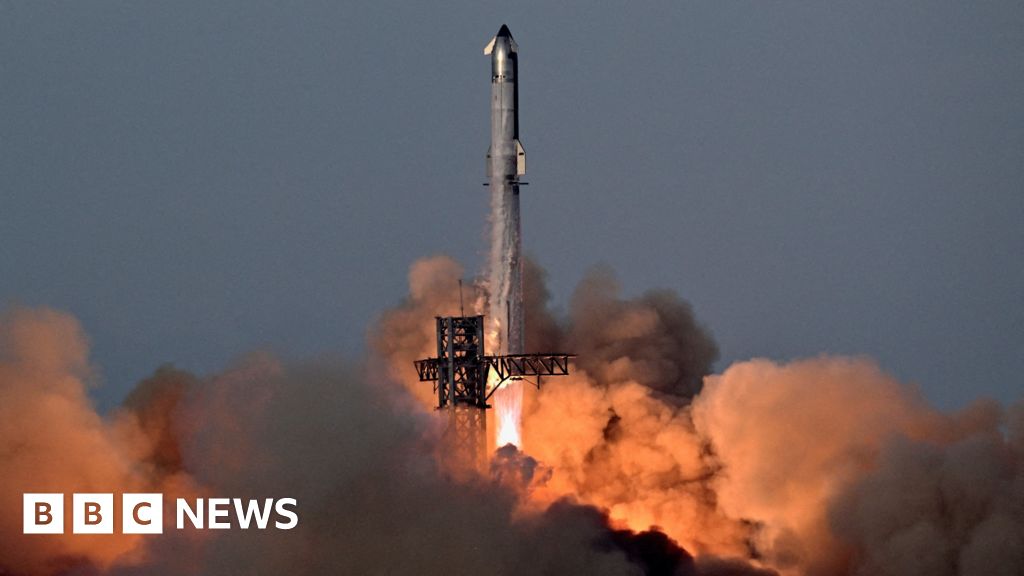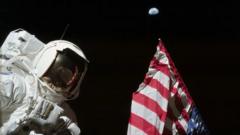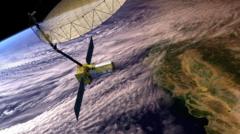CAPE CANAVERAL, Fla. – Blue Origin successfully launched its massive New Glenn rocket on Thursday, carrying two NASA spacecraft on a mission to Mars. This marked only the second flight for the New Glenn, which Jeff Bezos’ company views as a critical vehicle for NASA's future moon missions. After a delay of four days due to poor weather and solar storm activity, the rocket lifted off from Cape Canaveral Space Force Station, sending the twin Mars orbiters, Escapade, on a complex journey to the red planet.
In a significant achievement, Blue Origin managed to recover the launch booster after its separation from the upper stage, a pivotal step in their goal to recycle and lower costs, mirroring achievements by SpaceX. Employees cheered as the booster successfully landed on a barge 375 miles offshore, with a delighted Bezos witnessing the event from Launch Control. 'Next stop, moon!' they chanted in celebration of the successful landing.
The twin orbiters, designed to explore Mars' upper atmosphere and magnetic fields, will spend a year positioning themselves to take advantage of Earth's alignment with Mars, expected to occur next autumn, and arrive on the Martian surface in 2027. 'We really want to understand the interaction of the solar wind with Mars better than we do now,' said lead scientist Rob Lillis from UC Berkeley.
The mission budget is relatively modest at under $80 million and is managed by UC Berkeley. NASA opted for an early flight on New Glenn to save costs, despite earlier concerns over possible delays. New Glenn, named in honor of astronaut John Glenn, is a significant advancement in the company’s broader goal of launching a lunar lander. Blue Origin is also vying for contracts under NASA’s Artemis program for lunar exploration, hoping to work alongside SpaceX in returning astronauts to the moon.
In a significant achievement, Blue Origin managed to recover the launch booster after its separation from the upper stage, a pivotal step in their goal to recycle and lower costs, mirroring achievements by SpaceX. Employees cheered as the booster successfully landed on a barge 375 miles offshore, with a delighted Bezos witnessing the event from Launch Control. 'Next stop, moon!' they chanted in celebration of the successful landing.
The twin orbiters, designed to explore Mars' upper atmosphere and magnetic fields, will spend a year positioning themselves to take advantage of Earth's alignment with Mars, expected to occur next autumn, and arrive on the Martian surface in 2027. 'We really want to understand the interaction of the solar wind with Mars better than we do now,' said lead scientist Rob Lillis from UC Berkeley.
The mission budget is relatively modest at under $80 million and is managed by UC Berkeley. NASA opted for an early flight on New Glenn to save costs, despite earlier concerns over possible delays. New Glenn, named in honor of astronaut John Glenn, is a significant advancement in the company’s broader goal of launching a lunar lander. Blue Origin is also vying for contracts under NASA’s Artemis program for lunar exploration, hoping to work alongside SpaceX in returning astronauts to the moon.

















